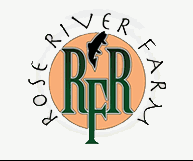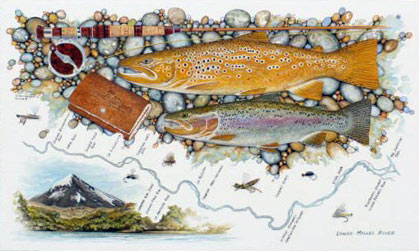Landlocked Atlantic salmon, July 2012, Fish of the Month!
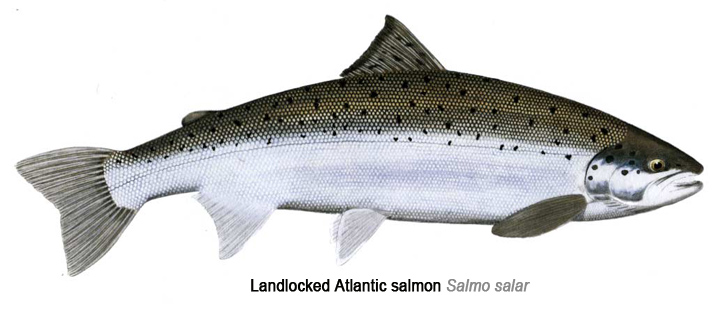
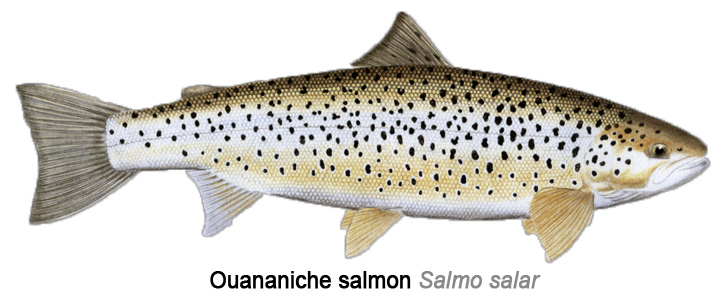 Landlocked Atlantic Salmon
Landlocked Atlantic Salmon
Salmo salar
Local Names:
Landlocked Salmon
Average Size:
12 to 20 inches
½ to 3 pounds
Distinguishing Field Marks:
Color and color pattern are reliable distinguishing field marks for this species. (See the illustration.)
-
The mouth is smaller than in other salmon and trout. The upper jaw does not extend beyond the rear edge of the eye.
-
The caudal peduncle is slender, making it easy to hold an Atlantic salmon by the base of its tail.
-
The anal fin is short-based and nearly triangular in shape, with 8 to 11 principle rays.
-
Their backs are lightly sprinkled with small, dark, or black, usually X-shaped spots. There are usually only a few spots on the head and gill covers.
-
In the spawning season, male Landlocked salmon develop elongated upper and lower jaws, known as the "kype."
-
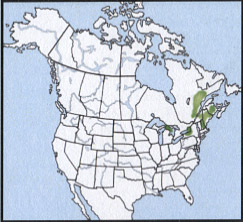 In spawning season, both males and females become more heavily spotted and darkly colored.
In spawning season, both males and females become more heavily spotted and darkly colored.
-
Young Landlocked Atlantic salmon (parr and smolts) have moderately forked tails. As they age, the trailing edge of the tail becomes straighter, more squared.
-
Canadian Ouaniche, a locally distinct form of landlocked salmon, has pale yellowish-ochre sides with more and larger spots than other races of Landlocked salmon. (See illustration.)
North American Range:
Map to the right shows approximate range in North America.
Diet:
Newly hatched Landlocked Atlantic salmon fry feed on planktonic organisms carried to them on the stream's current. At the parr stage, they feed almost exclusively on immature and adult aquatic insects. In lakes and rivers, adult Landlocked Atlantic salmon feed on a wide variety of forage, including aquatic insects, in all life stages, and small fishes, especially Rainbow smelt where they are available.
Fly Fishing for Landlocked Salmon:
Within their somewhat limited range, landlocked Atlantic salmon are considered a prized species.
In rivers and streams, fly fishing using dry, nymph, or "classic" New England streamer patterns is the usual method of choice. As you approach these fish, think of them as landlocked sea-run Atlantic salmon which are very willing to aggressively take whatever fly strikes their fancy, until they're not. "Matching the hatch" may work, but it may also be more productive to float large hair-wing dry flies, dry or wet Muddler Minnows, or swing any size or color streamer fly to holding fish or likely looking water until the take of a fish confirms that fly's value at that time on that day. If that's the only fish you turn, don't be afraid to keep changing flies……..Part of the intrigue of both sea-run and landlocked Atlantic salmon angling is the fact that it's the fish and not the fisherman who decides what pattern or presentation will prove successful.
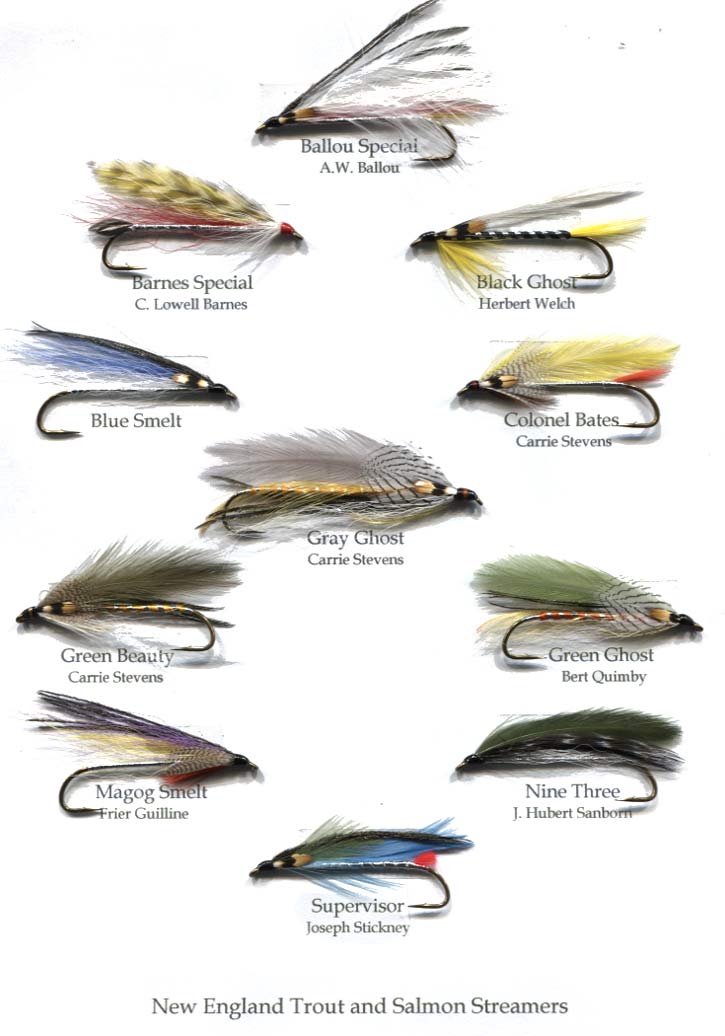
In lakes and ponds with populations of landlocked salmon, trolling is the most popular method of angling. In early to late spring, often known as "ice out," salmon and trout will be found in shallow near-shore water seeking food, usually around bottom structure, such as shoals, rock outcroppings or points of land. As warming air and spring winds mix the lake's waters, resulting in a constant temperature from surface to deep water, landlocked salmon can be found almost anywhere, cruising just beneath the surface. During this period of spring activity, most trollers use fly fishing equipment with sinking tip lines. Action is imparted to the fly by hand-twitching the rod or the line as it comes off the reel. Traditionally, spring trollers like to fish as many as 4 lines, set out at varying distances behind the boat. Old-timers advise that one of those lines be short enough to remain in the slip stream.
As the lake water heats during the summer months landlocked salmon sink deeper, staying in the "thermocline," where temperatures remain within their comfort zone of about 55 degrees F (13 degrees C). The traditional method for deep trolling in summer uses lead core or wire line on standard trolling gear. Terminal tackle for this method used a 3 foot long string of spinners followed by a "sewn-on" smelt or lures such as the classic "Mooselook Wobbler" fished at moderate speed for salmon and slowly for lake trout. Sadly, this method prevents the hooked fish from being able to run and jump as they would on light top water tackle. Some smaller salmon that take these deep water rigs are actually brought to hand dead from being dragged through the water and drowned by a fisherman who didn't feel the fish at all. As fish-finder and down-rigger systems have become more popular, they have become the standard choice for those anglers who enjoy warm weather trolling for trout and salmon.
Some landlocked salmon lakes and ponds cool early enough in the late summer and fall to provide a second top-water season.
As always, carefully study all state and local regulations before launching your expedition.
Taken on appropriate weight fly fishing outfits, landlocked Atlantic salmon are wonderful game fish, behaving in much the same way as their larger sea-run kin. They have a rich angling history with its epicenter in northeastern North America, New york state's Finger Lakes and Adirondack region lakes, ponds, and rivers, Maine's Sebago, Rangeley, Moosehead, and East and West Grand Lakes, and their tributaries, Quebec's southeast shore watersheds. Many of the streamer patterns still in use today were developed in New England, especially by Carrie Stevens at Middle Dam in the western Rangeley Lakes region. We highly recommend a relatively new book, entitled Carrie Stevens: Maker of Rangeley Favorite Trout and Salmon Flies by Graydon R. Hilyard, published by Stackpole Books.


